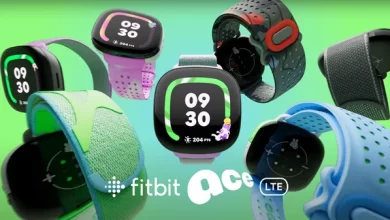The best VR headsets for 2024

If you’re ready to dive into the world of immersive digital experiences, investing in a virtual reality headset is the way to go. Whether you’re into gaming, virtual workouts or exploring incredible 360-degree environments, a VR headset can transport you to places you’ve never been – all from the comfort of your own home.
If you’re still on the fence about whether a VR headset is for you, there are plenty of reasons you might want to explore virtual reality. Maybe you’re looking for a more immersive gaming experience, or perhaps you want to use it for fitness, meditation, or even virtual travel. VR headsets can also be great for work, offering virtual meeting rooms and collaborative spaces that go beyond standard video calls.
Now more than in years past, there’s something for everyone thanks to more VR headsets being on the market at various price ranges. The Meta Quest 3, for example, offers fantastic all-around performance at around $500, while the Apple Vision Pro is packed with cutting-edge tech, but it’ll set you back a hefty $3,500. We’ve tested and reviewed a number of the most popular VR headsets on the market to help you figure out which are the best for your needs (and budget).
How we test VR headsets
I tend to judge VR headsets on a few basic criteria: Ergonomics, immersion and controls. It’s not that hard to shove a mobile display into a plastic headset and strap some cheap elastic headbands onto it. But it takes skill to craft something that’s well balanced and doesn’t feel uncomfortable after 30 minutes.
My test for ergonomics is fairly simple: How long can I wear a headset until I start to feel discomfort? For the most ergonomic devices, like the Quest 3, that could easily be an hour or two. But heavier PC hardware often feels cumbersome after just 15 minutes — you won’t find headsets guilty of that in this guide.
Immersion, meanwhile, comes from having high resolution screens with fast refresh rates, so everything looks sharp and smooth. Field of view is also a major element, as it describes how well VR screens can cover what you see. Having a narrow field of view makes it feel like you’re looking through a pair of binoculars, and limits your sense of “presence,” or the idea that you’re actually transported to a virtual world.
A wide field of view, on the other hand, can make it seem like you’re actually flying over the globe in Google Earth. We look at a few popular games, like Superhot, Beat Saber and Pistol Whip, on every headset to judge how immersed we feel.
The best controllers fit naturally in your hands and offer accurate tracking. The industry has basically adopted the design of Meta’s excellent touch controllers, but we’re also seeing intriguing leaps forward like Valve’s finger tracking gamepads. We judge controllers based on how easy they are to hold, how they hold up to sweaty gameplay sessions and how easily headsets can track their position in space.
However, it’s important to look at a virtual reality headset’s specs as a whole. Depending on what you’re looking for from a VR headset, you’ll want to consider factors like your PC’s graphics card if you plan to use the headset to play the best VR games. If you’re not looking to invest in a VR headset solely for gaming, features like head tracking allow you to explore your environment just by simply moving your head in the simulator. This often results in a more immersive and realistic experience.
Best VR headsets for 2024
Other VR headsets we’ve tested
Meta Quest Pro
As great as the Meta Quest 3 is, the Quest 2 is still a very good entry-level VR headset, and it’s worth considering if it’s on sale below its current $250 list price. The Meta Quest Pro, on the the hand, is an expensive boondoggle best ignored.
HTC Vive Pro 2
Outside of Meta’s hardware, the HTC Vive Pro 2 remains a fantastic PC headset, but it’s far more expensive than the Valve Index, which is more comfortable and offers better audio.
VR headset FAQs
How do VR headsets work?
At the most basic level, a VR headset is simply a high quality screen that you’re holding up to your face. For a wired headset, the actual work of rendering a game is done on either a PC or game console. For completely wireless devices, like the Meta Quest 3, that work is handled right on the headset. They rely on either external sensors, or sensors built into the headsets, to map your physical space. While you can use a traditional gamepad or keyboard and mouse in VR, they typically use motion tracking controllers to immerse you in their 3D environments.
What VR headset is best for full body tracking?
While we’re still waiting for a truly great haptic VR bodysuit to arrive, you can still achieve accurate body tracking with most Steam VR-compatible PC headsets. The Valve Index and HTC Vive Pro 2 both rely on room-tracking sensors that can map your body more effectively than the built-in sensors on competitors. You can also add HTC Vive Trackers to wrist and leg straps, as well as belts, for even better coverage. The Meta Quest 3 doesn’t have any easy body tracking solutions, but you can add Vive trackers when it’s plugged into your PC to mimic a Steam VR headset.
Only a few experiences, like VRChat, take advantage of full body tracking at the moment. Currently there aren’t any body tracking solutions for the PlayStation VR and VR2, but we’re intrigued by the company’s Mocopi body trackers, which were really announced in Japan.
What VR headsets are better than Oculus?
Oculus is the previous name for Meta’s VR hardware. Currently, Meta only supports the Quest 3, Quest 2 and Quest Pro, all of which are wireless headsets. As we explain above, PC VR headsets can generally achieve better quality virtual reality, since they rely on more powerful graphics hardware.
What VR headsets work with Xbox?
Currently, Microsoft’s Xbox consoles don’t support any VR headsets.
This article originally appeared on Engadget at https://www.engadget.com/best-vr-headsets-140012529.html?src=rss



